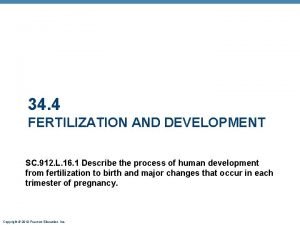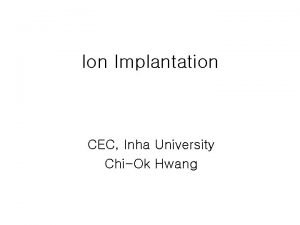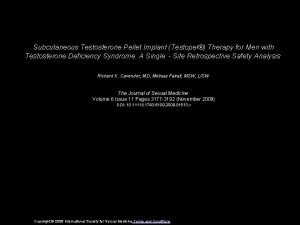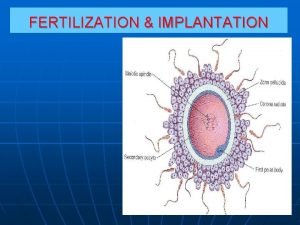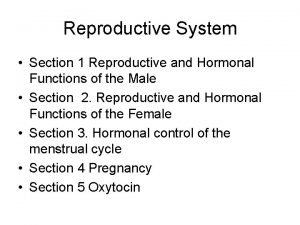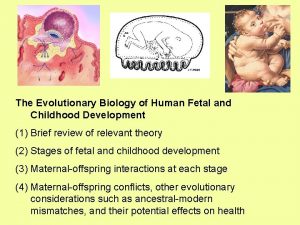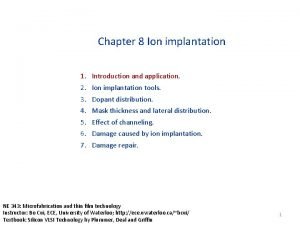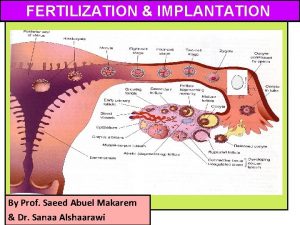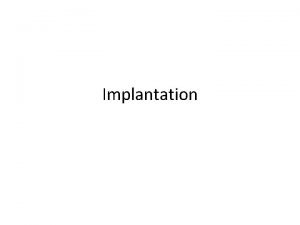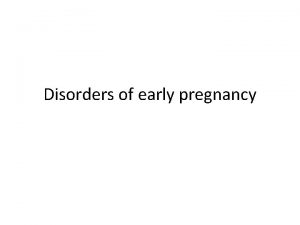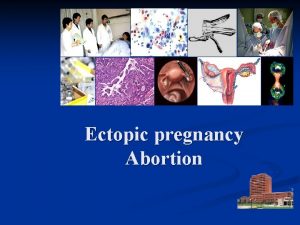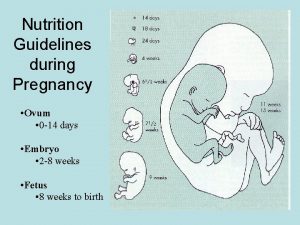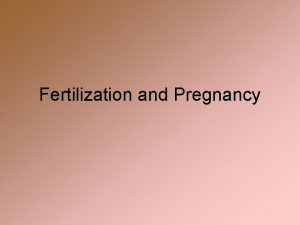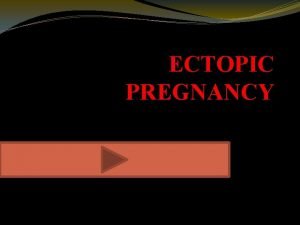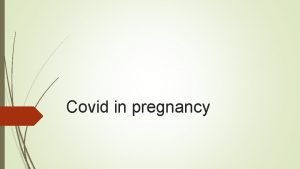Physiology of Pregnancy Implantation of Fertilized Ovum Fertilized











- Slides: 11

Physiology of Pregnancy

Implantation of Fertilized Ovum • Fertilized ovum undergoes a series of divisions as it travels through the fallopian tube (3 -5 days). • It enters the uterus as a cell mass (about 100 cells) called a _blastocyst which stays in the uterine cavity about 3 days before implanting. • The blastocyst is comprised of an inner cell mass (which develops into the fetus) & the trophoblast cells (which are involved in implantation and placenta formation). Sherwood’s Human Physiology 20 -23 5 th Ed. & 20 -24 6 th Ed.


Implantation of Fertilized Ovum • The trophoblast cells secrete proteolytic enzymes that digest and liquify the uterine endometrium. • The blastocyst attaches to the uterine wall and progressively invades the endometrium until it is completely buried. • Additionally, the trophoblasts begin to secrete human Chorionic Gonadotropin (h. CG) Sherwood’s Human Physiology 20 -25


Fetal Development • The inner cell mass develops into the fetus and trophoblasts form the placenta which supplies the fetus with maternal nutrients & oxygen via diffusion (occurs between maternal and fetal blood vessels). Sherwood’s Human Physiology 20 -26

Placental Hormones in Pregnancy • Human Chorionic Gonadotropin (h. CG) – Main function is to maintain the corpus luteum and prevent it from involuting. – Increased progesterone & estrogen from the corpus luteum prevents the endometrium from sloughing off and thus preventing menstruation. – Secretion begins 8 -9 days after fertilization and peaks at 10 -12 weeks of pregnancy decreasing to lower levels at 16 -20 weeks. – Stimulates testes in male fetus to secrete testosterone up until birth resulting in development of male sex organs.

Placental Hormones in Pregnancy • Estrogen – Secreted by trophoblast cells toward the end of pregnancy (last trimester) – Levels reach 30 fold more than normal maternal estrogen levels – Synthesized from androgenic steroids, mainly dehydroepiandrosterone (DHEA) secreted from both the maternal and fetal adrenal glands. – Main functions are to enlarge the mother’s uterus, breasts, & external genitalia • Progesterone – Secreted by trophoblast cells and increases steadily to about 10 fold over normal maternal levels. – Main functions are to decrease uterine contractility & prepare mammary glands for lactation.

Placental Hormones in Pregnancy Sherwood’s Human Physiology 20 -28 5 th Ed. & 20 -29 6 th Ed.

Relative Blood Levels Placental Hormones in Pregnancy 0 1 2 3 4 5 6 7 8 9 Months after beginning of last menstrual period Sherwood’s Human Physiology 20 -27 5 th Ed. & 20 -28 6 th Ed. 10

Birth Control Pills Contain either Estrogen and Progesterone or only Progesterone. • Estrogen and Progesterone cause a decrease in LH and FSH. – Fools anterior pituitary gland into thinking individual is pregnant. (during pregnancy there is a 10 -30 fold elevation in these hormones) – Inhibit ovulation (estrogen). • Changes secretion of endometrium. – Mucus is more viscous (Progesterone).

